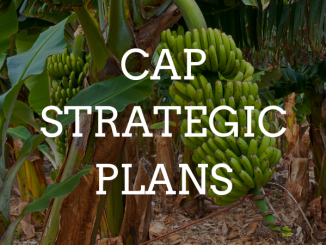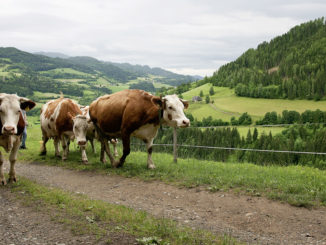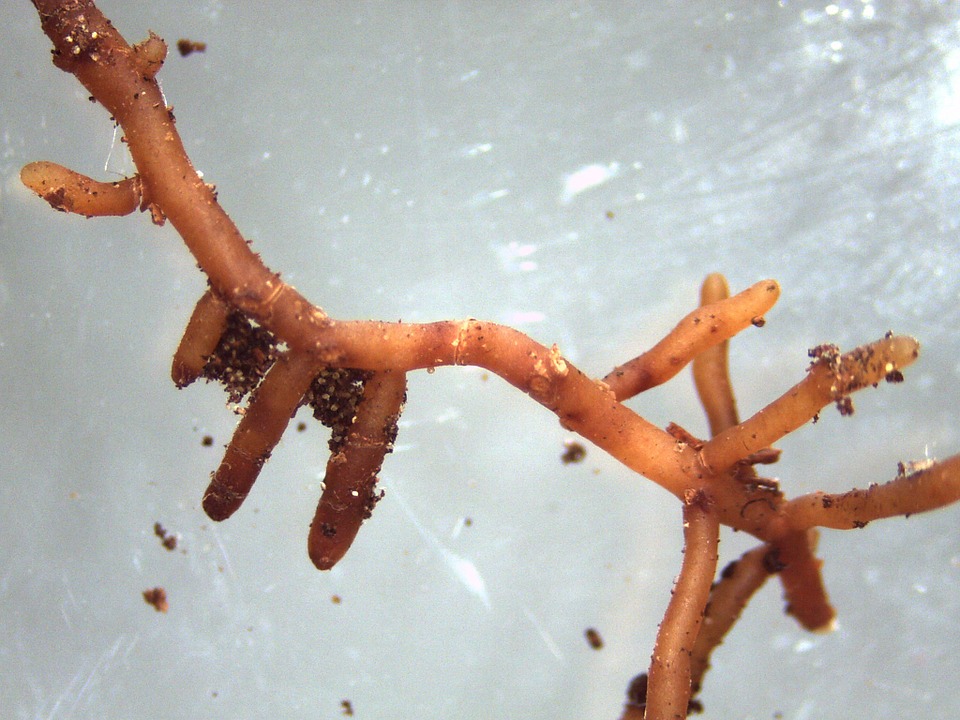
Stuart Meikle takes us back to the future, to the poorly named green revolution aka the origins of industrial farming, to the humus farming of just before that, and up to today with the huge challenges farming faces. Agtechtakeback: Tech Revolutions, Retro-Innovations and Humus Farming.
Do we have the time for more modern technical solutions?
With the passing of the Cold War era, one assumed centralisation was over. The free-market system was proven because communism had failed. It was a perverse conclusion. Three decades later are our economies truly free or is corporate control now so great that anything achieved by Moscow over the USSR is eclipsed by the power held within a few boardrooms around the World?
Is centralised control any more focused than it is within agriculture and food, be it in farm-input supply, food processing or retail? Until the turn of the Millennium, farming and food was a backwater but since a more recent food price spike and the financial and property market crashes, it has become a golden goose that keeps on laying dividends and bonuses for the corporate world.
This is the new agtech context. It used to be the domain of the pedigree farm-animal owner, the blacksmith or the farmer-inventor. Plant breeders were one unto themselves, quietly toiling in the faith that the next cross would deliver an income somewhere down the line. It was all a rather pleasant place to be.
Constraining farming’s capacity to react to natural evolution
The ‘Green Revolution’ of the last sixty years has facilitated centralised control. As farmers have become increasingly dependent on purchased inputs [aka technologies] developed and sold to them by others, the number of input sellers has dwindled. As the agri-supply industry has consolidated, control has become concentrated in the hands of the few. This shows no sign of abating.
The needed R&D investment and an ever-tougher regulatory framework for pesticides and animal health products further combine to limit the number of players willing and able to supply farmers. In addition, there is rising consumer resistance on many green-revolution solutions. Hence, the prediction that the availability of these human-made, food-production tools will only decline.
One can go further. At what point will we reach peak fossil fuels and, hence, peak artificial nitrogen? Peak phosphates will also, in time, occur. Already regulations and taxes to control pollution, health and greenhouse gas emissions are coming in, with more likely in the near future.
EU | Provisional Agreement on Cadmium Limit of 60 Mg/Kg Agreed
As to the suite of pesticides, as with antibiotics and anthelmintics, natural resistance to them is becoming increasingly prevalent. Some pesticides are also being lost as unforeseen damage to the natural environment is being identified and attributed. There are those who argue that lighter regulation will help to ease the registration of new formulations but that is unlikely to occur.
Hence, can we rely on our human-made solutions for a sustainable food supply? To quote a pre-green revolution statement that almost foreshadowed the situation we are now in; “while the physical, mechanical and chemical genius of man has rapidly evolved… the processes of nature remain a law unto themselves” A quote from Food, farming and the future by Friend Sykes and written in 1950. Nature remains uncontrolled and we must recognise that it will not be controlled.
Climate change is making the headlines. Likewise, the need to dramatically reduce on-farm antibiotic use. The degradation of soils is finally getting a mention. But how often do we read about the threat to our food systems from the declining efficacy of pesticides and animal-health products?
We need innovation within our food systems like never before but have we become too focused on expensive, outside-the-farm-gate innovation? Farmers were always very innovative, but the last sixty years has focused upon solutions largely unsuited to simple, on-farm research. A consequence has been that control of food production has passed to those who govern the supply of technical inputs and away from the world’s farming communities.
Our food-producing solutions are now science-based but, going forwards, we must move from the artificial to the natural. Food production must again work with nature rather than against it – a retro-innovation. Such a change will allow more farmer-led innovation and a rebalancing of the ownership of food systems.
Is it time for farmers to initiate yet another agricultural revolution?
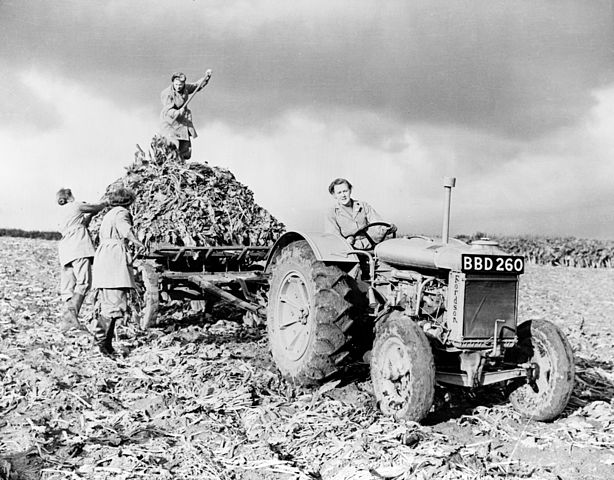
Over recent decades farmers have adopted new technologies with alacrity. It is reflected in yields. Wheat yields in the early 2010s in, say, France and the UK were 2½ and double those of the early 1960s. A significant part of this rise was attributable to plant breeding [especially the introduction of short-strawed types]. Another factor was the more sophisticated use of more effective fungicides. Those two combined allowed the increased use of artificial nitrogen fertilizers [by the early 2010s the use of N in France was 2¾ times the 1960s level. In the UK it was 1¾ times (all from FAO data)].
Many farmers will say that while food production rose it facilitated the operation of a ‘cheap food policy’ and, thus, their incomes did not rise commensurately with farm yields. In other words, the farmers’ adoption of technology has not been reflected in their profitability.
If recent technologies have not created a sustainable financial model for farmers, will they deliver a sustainable and secure food supply for society? The following examples indicate that they will not.
- On-farm antibiotic use is a massive concern as resistance to antibiotics used in human health care rises. Action will be taken quickly as the link between farm use and the consequences for human health is far clearer than if an impact chain has to be identified and understood.
- Resistance to ivermectin and other anthelmintics commonly used in cattle and sheep farming will have a productivity-loss impact for farms. Further its widespread, often prophylactic, use may be having additional and serious consequences as per “Short-term physiological and behavioural effects of ivermectin on dung beetles may have long-term consequences for beetle populations and ecosystem functioning”. For ‘ecosystem functioning’, read ‘soil health’ as per its use for effective human food production.
- Glyphosate is a controversial subject. For some it is safe in the context of those who apply it, for others the concern is over the impacts that its widespread presence in the environment will have. Whereas its original farm use was highly targeted, it is now used routinely across whole landscapes. It is unlikely that the consequences are yet fully appreciated.
- The association being made between neonicotinoids and bee [pollinator] population decline has already led to a European Union ban on the use of such products in some situations.
- Black-grass resistance to herbicides like isoproturon and trifluralin used in cereal production.
- The use of chlorothalonil is now being questioned. It is a widely used fungicide for the control of Septoria in wheat production. It is also used in fungicide ‘cocktails’ to counter resistance build-up.
To the above can be added the issues surrounding nitrogen fertilisers, including their availability and cost, GHG emissions, air and water pollution during application, and the impact of nitrates on the health of many organisms (possibly counting soil microbes] including humans. Phosphate fertilizer availability is known to be limited while, in excess, phosphates are a pollutant whereby, in some countries, phosphate levels are legally constraining agriculture and, hence, food production.
Untangling the web of consequences from agro-chemical and fertiliser usage is complex but in the coming years it is a safe to conclude that regulatory and monetary constraints on usage will only rise. Hence, our farmers must adapt to having fewer, not more, tools in the human-made, food-producing tool kit. It is a major change and society must support them through the transition.
Finding innovation in the shadows of on-farm, farmer-led research
Farmers rightfully feel aggrieved that they are blamed for the impacts of modern food-production methods. The majority accepted the science and placed their trust in those who supply their farming inputs. It is the farmer who now gets blamed for the negative impacts, albeit they have delivered more food to the general populace at a lower financial cost. It is farmers who are accused of placing their profits before the environment while nobody seems to be attributing food production externalities to the widespread adoption of the negative-impact technologies created by others.
While farmers lose the public-relations battle, we now see the dichotomy of farmer-representatives defending the use of the very technologies that have led to that PR loss. In part it is a fear of the unknown. After decades of being taught and advised about how it should be done, it now requires a leap of faith to change. But change farmers must and it is imperative that farming’s leadership and the farm-supporting government-agencies step up to the mark. If not, what is their role?
When assessing food production [aka agriculture] in the context of the complexity of issues facing it, one can conclude that the modern systems are breaking down. And accepting such a conclusion is imperative if we are to transition and change. If we don’t, and we kick the can down the road, it will be the younger – not future – generations who face going over a food-production cliff-edge.
If we are indeed facing a ‘conventional’ farming breakdown, are there alternatives? Broadly speaking, these were highlighted within the context of my own soils-focused food and farming policy paper published by ARC2020.
#SoilMatters part 7 | Soil, Farming and Society: support mechanisms for the necessary transition
More specifically, faced with the declining effectiveness of ‘modern’ food production technologies, the need to reduce net GHG emissions from farming, and restoring farmland biodiversity, we need to adopt:
- Regenerative farming systems that have little to virtually zero reliance on human-made inputs
- Free-range and herbage-based milk and meat production that supplies eat-less-but-better food
- Rotational farming that integrates livestock with tillage to create robust plant-growing systems
- Multi-species pastures with modified grazing methods that sequester carbon and rebuild soils
- Soil-health-first plant production that utilises cover crops, min/zero tillage, manures and composts
- Agro-forestry that integrates tree and hedgerow crops with grazing farm animals and biomass
- Farming that uses less fossil-fuels, generates its own power and captures emissions for energy
Inevitably the above will incorporate lessons learnt from organic farming but they will also include regenerative farming practices that have been developed by farmers who are not registered organic.
There will remain an important role for agri-tech going forwards, but its role will be to reduce usage and reliance on external-to-the-farm inputs and to provide back-stop interventions when all else fails. Into the long-term, it will only play a supporting role to regenerative farming.
After sixty years of focusing research upon ‘conventional’, input-hungry farming, the above alternatives are poorly supported by science-based research. Hence, if we now expect revolutionary food solutions to come already packaged and ‘peer-reviewed’, it is unlikely that we will be able to change farming and food systems fast enough; be it to address climate change, biodiversity loss, soil health collapse, or the efficacy decline of our modern food-production solutions.
Simply, if the research has not been funded and has only occurred outside the mainstream, we cannot expect to have solutions that adhere to mainstream research standards. It is not the fault of those who have been working on alternative systems that we, as a society, have chosen to put all of our food-system eggs in a basket that has now being found wanting. Given the time frame and the porosity of well-funded research, we must analyse what we have and to return the emphasis to the analysis of farmer-led research into practical, regenerative-farming methods.
And the upcoming CAP reform must do more than pay lip service to its supposed public goods targets: indeed, CAP reform is where supports can be put in place to turn promising regenerative practices into evidence-backed, on-the-ground sustainable farming. Some initiatives like the European Innovation Partnership point in the right direction, and there are some regenerative farming examples emerging under EIP, but these – especially farmer led EIPs – are in the minority. EIP wasn’t always like this – the original idea, when ARC2020 was involved, as seen here 2013 and here 2014) was that it would be primarily farmer-led.
Back to the Future: retro-innovation from the ground down
For anyone who research the origins of many of the earlier listed alternatives, they will find that they are grounded in pre-1960 research, be it on-farm or formalised. It is work that would have provided the foundations of our food systems if we have not gone down the ‘green revolution’ route. Alongside analysing more recent work, we should revisit and learn from what has gone before – and again, this would allow for retro-innovation.
And if one doubts the merits of such an approach, see the two quotes below from the 1950s. Nearly seventy years old but for those who have already chosen to follow the regenerative farming route, it all sounds rather familiar…what was called soils-first farming, or back then humus farming.
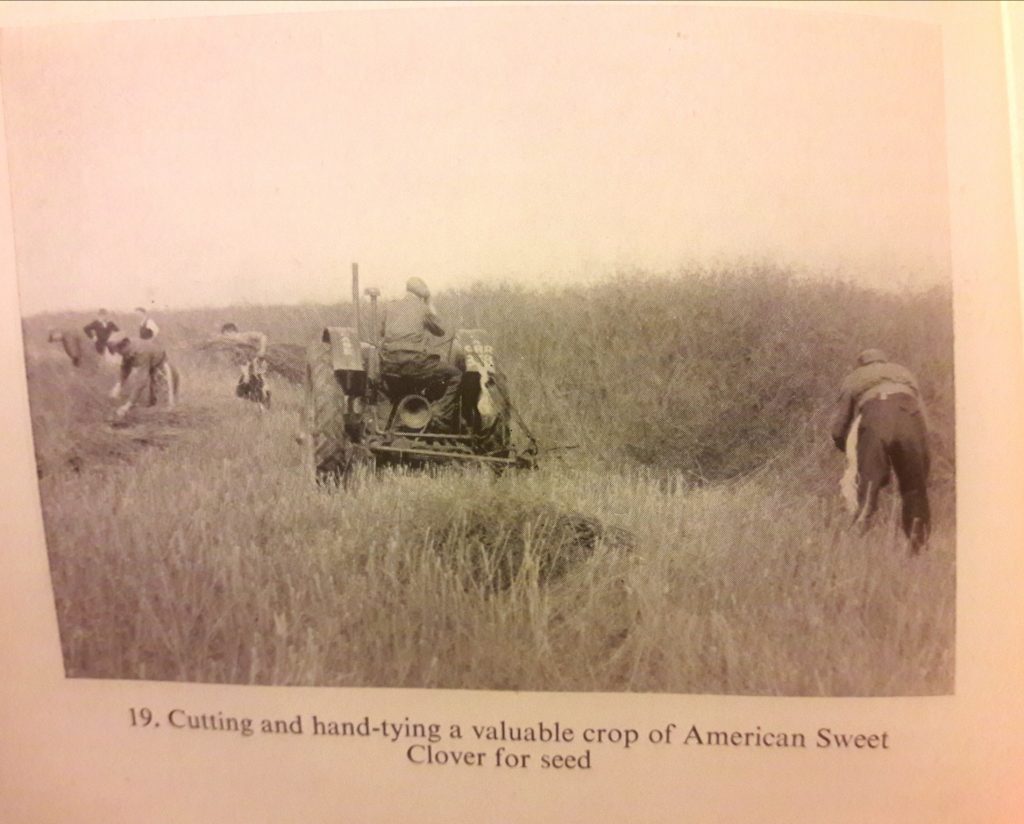
“The deep-rooted ley is the pivot of humus farming… I have evolved a four-year deep-rooting ley. We know that 50 per cent of the plants included in this ley, such as chicory, lucerne, sweet clover, kidney vetch, cocksfoot, sainfoin and burnet, go deep into the subsoil for minerals that are evidently not available in the top few inches. Many of these plants can be traced down several feet into the ground. They will go down into the limestone rock and split the rock asunder in search of the minerals they need… these plants go down into the depths of the earth… in search of their requirements. Through the stems and leaves of the ley herbage, consumed by grazing animals and then dropped as dung and urine these minerals are brought into circulation in the top soil. By this method supplies of mineral and trace elements are continuously maintained and so long as a rotation of crops and ley are preserved, there cannot be any deficiency in mineral content”.
Source: Food, Farming and the Future, Friend Sykes, 1950.
“I drew the gardener’s attention to the wonderful quality and luxuriance of the crop generally….’now, the part of the garden which you are looking after yourself is an example of the mycorrhizal association -in other words the “living bridge” which Nature provides for the conducting of the sap and solutions of nutriment in the soil through a tubular or cellular thread to the plant. Some 80% of all our garden and farm plants are now known to be mycorrhizal-formers, and wherever you get organic manure properly composted, and the compost in an advanced humic condition, – in fact, wherever pure humus has been created by careful and skillful preparation -there you have these white threads of mycelium which are part of this almost mystical mycorrhizal association and function as a great feeder of the crop…’…any soil which is not forming mycorrhiza is definitely in bad condition. this can only be remedied by the application of humus, artificial fertilizers being definitely lethal to mycorrhizal formation”
Source: Humus and the Farmer by Friend Sykes 1956.




